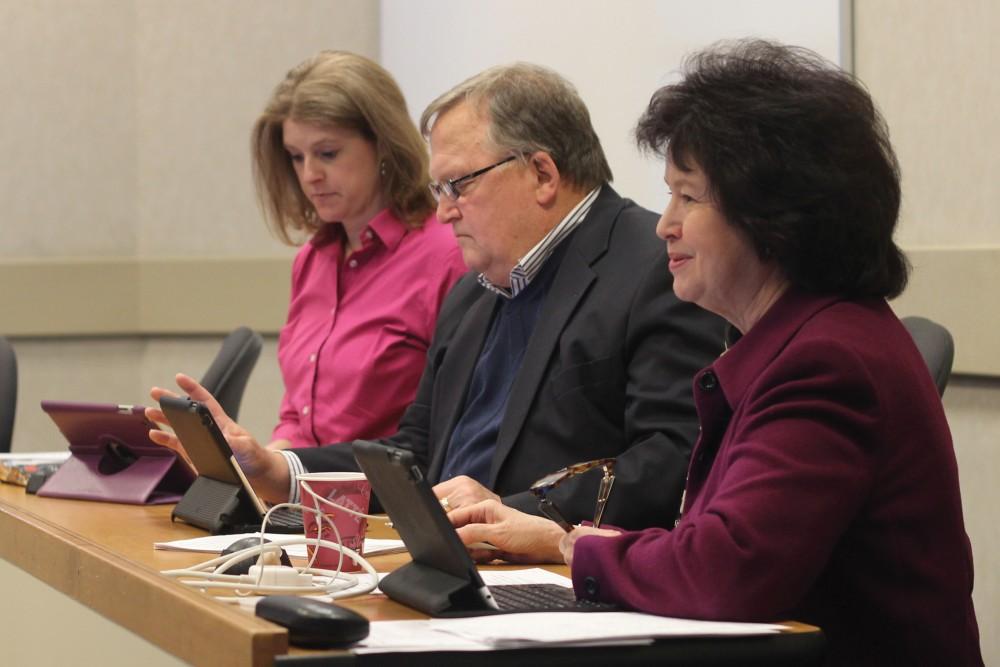Unnamed breed of faculty at GVSU

GVL / Jessica Hollenbeck Provost Gayle Davis gives her report at the ECS Meeting on Friday.
Jan 20, 2014
An unidentified species of faculty has been discovered at Grand Valley State University. The mixed breed has been spotted in classrooms and offices across the Allendale and Pew campuses.
On Jan. 17, at the first Executive Committee of the Senate meeting of the semester, senators discussed this species, which is comprised of teaching faculty at GVSU who have also taken on administrative duties.
“I’m faculty something else,” said GVSU writing professor Mark Schaub.
In addition to teaching, Schaub performs administrative duties in his position as the chief international officer of the Padnos International Center.
“The university does benefit from having experienced faculty in administrative positions,” said Karen Gipson, chair of the University Academic Senate and professor in the physics department. “I think we can agree we want faculty in there as advocates. Faculty are the best advocates for other faculty.”
However, some are concerned with taking on these roles due to controversial language in the Administrative Manual. Questions regarding tenure, promotion and sabbaticals are being raised for people such as Schaub who are both faculty and “something else.”
“What we’ve got is you’re either an (administrative professional) and live in that section of the administrative manual or you’re a faculty member and live in that section,” said Tom Butcher representing University Council. “There is no hybrid.”
Chapter Four, Section 2.11 of the manual states that the time served by a faculty member in an executive, administrative and professional (EAP) position shall not be counted toward tenure, rank or promotion nor in determining sabbatical eligibility.
In addition, it states that a faculty member who chooses to stay in an EAP position for more than three years shall relinquish their faculty status, including tenure rights and faculty rank.
Provost Gayle Davis said this policy has bothered her since she came to the university, calling it “old Grand Valley” and “not sensible.”
“I’ve routinely waived that three-year rule,” Davis said. “I’ve never taken anybody’s tenure away.”
Some EAP positions are allowed to retain their faculty status and rank, including tenure. However, these positions are limited to the provost/vice president for academic affairs, associate vice president for academic affairs, the dean of an instructional division, the dean of the academic resources and special programs, and the dean of university library.
Still, many faculty administrative positions fall outside of that limited scope.
“There is no other category to put them in,” said Marie McKendall, the chair of the Faculty Personnel Policy Committee. “There needs to be another category, but right now they are considered EAPs if they are more than 50 percent administrative.”
McKendall also said that once faculty members accept an administrative position, they are no longer are listed as a part of their unit. If a faculty member isn’t listed, then a unit no longer receives money for that person, even if they are still teaching a course.
“This is probably all more complex than most people realized it was,” McKendall said.
The FPPC is currently rewriting some of the language in the handbook. The changes will be sent back to the ECS for approval and then on to the University Academic Senate.

























